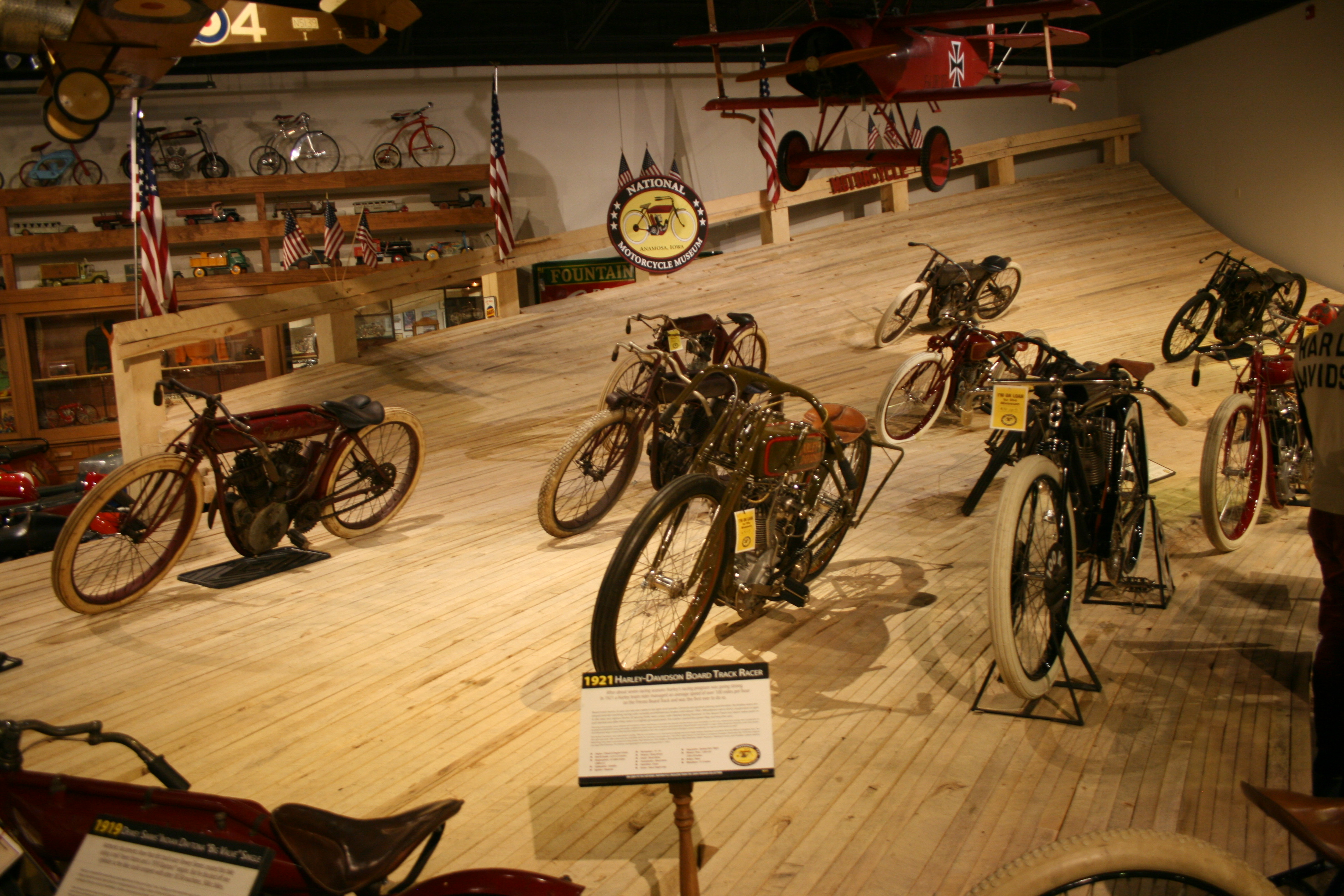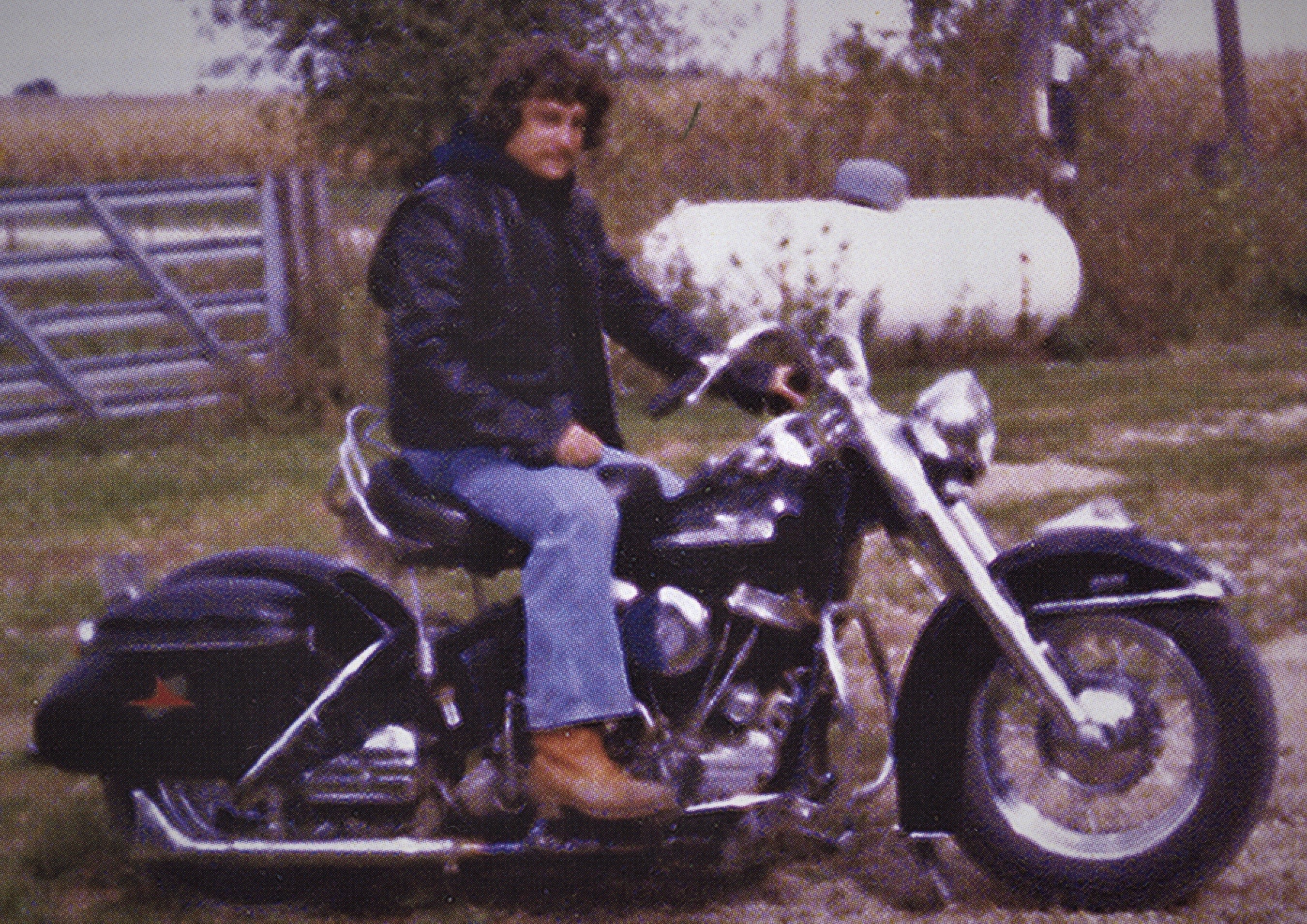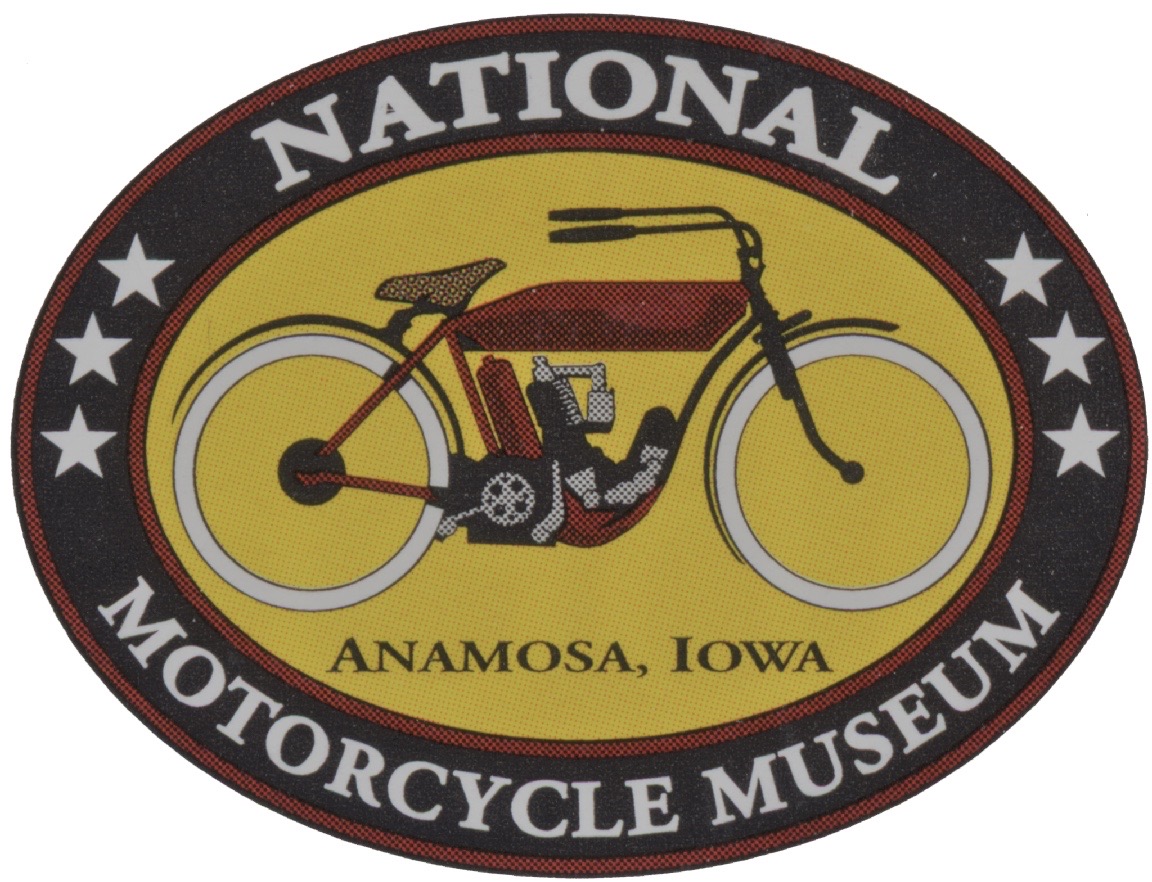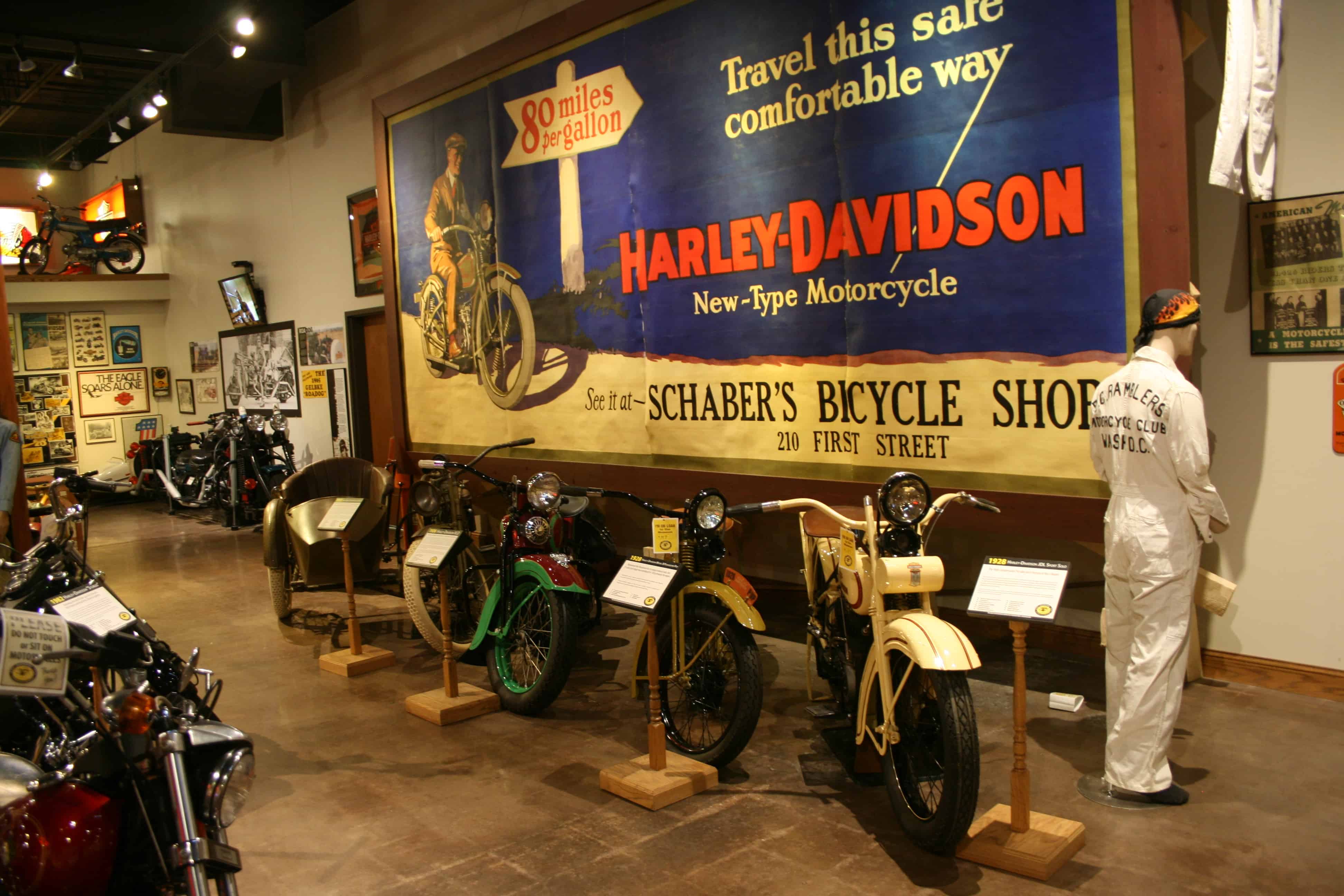Anamosa, Iowa, is a bit more than 2 ½ square miles of land with a few more than 5,500 residents, and it does not appear to be a place where you might witness change that might affect an entire industry. But Anamosa, Iowa, is the birthplace of John Parham, a 2015 inductee into the American Motorcyclist Association Hall of Fame. It was from his hometown that Parham changed the landscape of motorcycling through sheer passion and determination.
Custom motorcycle designer and legend Arlen Ness was awed by John Parham. He describes seeing Parham in Italy in 1993 at the European Super Rally, a gathering of Europe’s Harley-Davidson enthusiast clubs. Ness knew about John Parham. He’d seen him at many events stateside. But Italy?
“You talk about Midwestern American work ethic; this is it!” said Ness.


The story of John Parham resides in the National Motorcycle Museum, just one of the many passions he had in a life filled with unwavering faith in his vision for his family, his community and motorcycling. The museum stands as a testament to what he truly believed in and set as his purpose — to make motorcycling the best experience possible for his fellow enthusiasts.
The museum can’t be fully detailed without some background on its founder. He was born in Shelby, Iowa, in 1954. In 1956, the family moved to Anamosa, where his dad took a job with the local Rural Electric Cooperative. John grew up as any typical smalltown Iowa kid would — Cub Scouts, played football and swam on the high school swim team.
He was described as industrious and proved that with his efforts to build a savings account by age 12, mowing lawns, shoveling snow and taking derelict bicycles he would gather on trips with his dad in the surrounding countryside and rebuilding them to sell. He’s been quoted to say, “I was taught to be polite, courteous to my elders and that hard work is a virtue.”
But the small-town environment didn’t stop him from dreaming and taking on adventures that pushed him outside his little community. Even to the point of dating a girl in another town, something that was simply not done. Eventually that girl became another of his passions — and his wife.
Like a lot of kids, Parham became interested in motorcycles. Not only were they relatively inexpensive, but he could travel to nearby Monticello to see his girlfriend, Jill. A little Honda fit the bill and he was safe to ride it without drawing any special attention. The mid-1970s was the peak era of Japanese two-wheelers dominating the American landscape, so the Honda was non-threatening to both John’s parents and anyone else who might have seen John tooling around the countryside.
Eventually, he traded up to a slightly larger 250cc 2-cylinder Kawasaki which could transport he and Jill, but the motorcycle bug pushed him to seek more power and he set his sights on a 1971 650cc BSA. This was a turning point.
Traditional motorcycles at that time included Harley-Davidson, Indian, Triumph and, of course, BSA. They were most associated with tough thugs and punks, as Parham described it, but he still wanted that BSA.
When his parents objected, John decided to run away from home, though what he actually did was to spend a couple of nights at the home of his high school science teacher, Don Brown, a motorcycle cycle enthusiast.
John got his BSA and spent the winter months making it special — chopping the frame, extending the forks, installing Z bars and a special seat and sissy bars. That didn’t make his parents any happier, so he stored the motorcycle in the hallway of the apartment where Jill lived. She had graduated a year ahead of John and moved to Anamosa to be closer to John as he completed high school.
After his graduation in 1973, Parham went to work at Pamida, a 200-location department store chain in the central U.S. where he got his first taste of customer service. John’s boss became his mentor and John found he was intrigued with business, to the point of taking classes at nearby Kirkwood College in Cedar Rapids.

By the following year John and Jill were seriously considering marriage and the two decided that September 14, 1974 was a perfect date and it was also John’s 20th birthday.
John worked various jobs including a day job as a foreman at Doehr Electric, but his growing interest in motorcycles moved him to open (along with his former science teacher) D & J Cycles in 1975. But by 1979 their interests had diverged and Parham launched J & P Cycles in a rented building with a dirt floor.
J & P Cycles would grow to become the largest retail motorcycle accessories business in the country. John and Jill sold sold the company in 2001, but their son, Zachary, continues to be involved in operations of the company that is a major employer in Anamosa.
By 1988, with the business fully established and providing parts and accessories worldwide, John turned his attention to motorcycle history, first establishing a series of vintage racing events and venues that boosted interest in many classic bikes many enthusiasts had never had the opportunity to experience.
The idea of creating a motorcycling museum was explored with the location determined to be the mecca of motorcycling, Sturgis, South Dakota. By-laws were established, and John was heavily involved, providing not only his own collection but paying the travel expenses for visits with well known motorcycle collectors Lonnie Islam and E.J. Cole regarding the loan some of their bikes for the museum opening in 1990, at the 50th anniversary of the Sturgis Rally.
Parham decided to open a retail storefront next to the proposed museum site on Junction Avenue, just off Exit 32 of I-90, but the museum didn’t attract enough patrons and for a decade it struggled. Parham decided to move to the museum to Anamosa, where he could oversee its operation on a daily basis.
It was a difficult decision and one that had some enthusiasts unhappy for the move, but Parham’s business sense told him he would need to radically change how the museum was operated if it was to survive. In November 2000, the Sturgis facility closed and the collection to Iowa.
Two years later, a new Sturgis Motorcycle Museum and Hall of Fame opened in South Dakota and Parham was glad to see its success. In the meantime, Parham had established the National Motorcycle Museum and Hall of Fame on Main Street in Anamosa.

For a motorcycle enthusiast, the 14,000 square foot museum is simply breathtaking. Though there are other museum’s in the U.S. (including Barber Vintage Motorsports in Alabama, the AMA Motorcycle Hall of Fame in Ohio and, of course, the Sturgis Museum), few capture what drove the Parhams to create their collection — an incredibly enormous passion for pure motorcycling.
The National Motorcycle Museum is well-known for several one-of-kind bikes including the only surviving Captain America bike from the movie Easy Rider, starring Peter Fonda and Dennis Hopper, but also bikes owned by the likes of Steve McQueen, Malcolm Smith and artist Von Dutch.
When Parham talked about the collection he admitted that his tastes changed over the years, moving from strictly loving Indians and Harleys to building a more eclectic collection including other American brands, European and Japanese machines and a recognition of original paint machines, a far cry from John’s love of customs.
It was in 1978 that John and Jill purchased what is recognized as their first “collectible” motorcycle, a 1955 Harley-Davidson FLH Panhead, and it is the focal point of the collection which features over 225 motorcycles on display. John and Jill’s personal collection numbers some 175 bikes, but John also collected over 50 engines (the Motor Wall), and toys and memorabilia that dates back to the very first years of motorcycle manufacturing and sales.
Of course, you will see a mass of early Harleys which includes an original early Harley billboard and all types of posters and visuals born from the Harley mystique and history. A Shell gas station is resurrected in the space along with a vast collection of gas and oil signage and there are some four-wheeled examples of racers and odd vehicles that simply caught John’s eye over the years.
Vincent, Brough, Curtiss, Reading Standard, CV Stahl, Flying Merkel, Henderson, Sears, Yale Twin, Iver Johnson, Thor Twin, Norton, Moto Guzzi, Crocker, Marman, Ariel, Triumph, Benelli and, of course, Indian…they are all represented within the collection and presented so visitors can be up close and personal with each machine.
But the collection doesn’t stop there. In addition to Steve McQueen’s Indian chopper with attached bedroll, you’ll see Von Dutch’s Triumph, a recreated board track, a Merkel collection, hill climb display, a Dirt Riding USA exhibit (thru 2018), a Land Speed area, bicycles, period clothing and apparel…there’s just so much to enjoy that it becomes hard to focus on just one area because another temptation is just across the aisle or around the corner.

John Parham died too young at age 62 in April 2017 following a lengthy battle with pulmonary fibrosis. He had survived a lung transplant in 2010 which gave him those additional years to continue to follow his passion, share time with his family and continue to build a legacy within motorcycling that few have achieved.
The museum is overseen by Jill Parham, who maintains the vision and direction of what she and John first saw way back in 1979 when they created J & P Cycles. Mark Mederski, a well-known motorcycle historian, curator and marketing specialist, was brought on as the museum’s special projects director and has a hand in making certain the legacy John left behind is preserved and presented.
Few enthusiasts get the opportunity to leave a legacy that truly presents their passion, but John and Jill Parham, from the very beginning, recognized what motorcycling meant to history. And the museum, along with the Parham collection, reflects that recognition.






Evel’s name was Robert not Richard, all his memorabilia is now in Topeka Kansas, at the Evel Knievel Museum. Smithsonian does have one original XR-750.